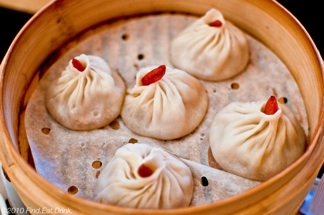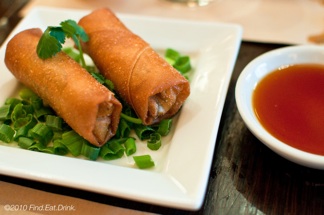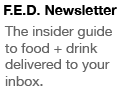Chinese, Regional, Modern Dim Sum, Ed Schoenfeld, Joe Ng, Chinatown Brasserie, General Tso's Chicken, RedFarm, Red Farm, West Village, Shun Lee West, Pig Heaven, Auntie Yuan's, Lemon Chicken, Lake Tung, Ting shrimp, Northern - Beijing, Peking Cuisine, Eastern, Shanghai Cuisine, Western, Szechuan, Sichuan Cuisine, Southern, Cantonese Cuisine, Chinese New Year, Mongolia, Peking Duck, Crab, Braised, peppercorns, peppercorn, chilies, Kung Pao Chicken, dried sauteed string beans, dim sum, steamed fish, ginger, NoHo
By Restaurateur Ed Schoenfeld & Chef Joe Ng - RedFarm - West Village- New York, NY

Regional Chinese Cooking Explained

WHAT
The four main regions of Chinese cooking explained by restaurateur Ed Schoenfeld and chef Joe Ng.
WHY
Each region has a distinctive flavor profile.
February 9, 2010
When you want to know about Chinese food in New York, there is one guy who’s earned the formidable reputation as an expert. His name is Ed Schoenfeld and he began working in Chinese restaurants not long after Lemon Chicken starting appearing on menus. His first job was as maitre d’ of Uncle Tai’s Hunan Yuan on the Upper East Side in 1973, one of the most influential Chinese restaurants in the United States.
Ed went on to open up over 30 restaurants, including Shun Lee West, Pig Heaven, Auntie Yuan’s, and Chinatown Brasserie. This spring, he will be launching his newest venture, RedFarm, in a historical townhouse at 529 Hudson Street. The restaurant will have 40 seats and a modern Chinese menu created by his business partner, dim sum chef Joe Ng.
Chinese food in New York has changed a lot since Ed started in the business, when highly skilled Hunan chefs dominated the scene and received four star reviews from the New York Times. These guys were trained by master chefs in China to cook for elite banquets at the governor’s mansion in Hunan. When communism took over, many of the chefs split, some ending up in Taiwan and eventually New York City. It’s this school of the banquet arts that launched the careers of the chefs who first Americanized Chinese cooking and created some of the greatest hits like General Tso’s chicken, cold chicken with spicy peanut sauce, and Lake Tung Ting shrimp.
We asked Ed to help us navigate the current Chinese restaurant scene in New York City and share his favorite places to eat. The majority of the Chinese restaurants in New York tend to be in Manhattan’s Chinatown, Flushing in Queens and Sunset Park in Brooklyn.
Here’s a breakdown on the four major regions of cuisine:
京菜 Northern - Beijing (Peking) Cuisine

Formally known as Mandarin. The proximity to Mongolia influences the cooking. The flavors are stronger, using garlic, leeks, onion and wheat.
Examples: Peking Duck, Hoisin Sauce, Hot & Sour soup, Beggar’s chicken, lamb, and beef. Noodles and pancakes made with wheat.
上海菜 Eastern - Shanghai Cuisine

Sweeter, darker, and braised. Food includes more sugar, soy, star anise and cinnamon.
Examples: Sweet and sour spare ribs, fish, eel, crab, oysters and seaweed. Crispy chicken, stews, dumplings with the skins made with wheat.
四川菜 Western - Sichuan / Szechuan Cuisine

Szechuan cuisine often contains food preserved through pickling, salting, drying and smoking. It is generally spicy, sweet, salty, and tart, using sugar, vinegar and hot peppers or Szechuan peppercorns. The area is landlocked, so less use of seafood, with the exception of fresh water shrimp. It’s very common to use fresh chilies.
Example: dried sauteed string beans, Kung Pao chicken, smoked pork with leeks and bamboo shoots with hot peppers, casserole with fish head, cold chicken in spicy peanut sauce.
粤菜 Southern - Cantonese cuisine

Cleaner, well-balanced flavors. Never oily or greasy. The food highlights the taste of the food, bringing out the natural flavors of the ingredients. The cooking uses starches like potato and tapioca.
Examples: dim sum, rice-based noodles, steamed fish with light soy sauce and ginger, salt and pepper shrimp, lobster with ginger and scallion.
Recommendations

1) Chinese restaurant recommendation round-up
2) Authentic Chinese restaurant recommendations from:
RECOMMENDATIONS
Recommendations from restaurateur Ed Schoenfeld and chef Joe Ng for authentic Chinese restaurants in Manhattan, Brooklyn, and Queens.











RedFarm
West Village
Chinese / Dim Sum
529 Hudson Street
New York, NY 10014
T: 212.792.9700
Website:
Chinatown Brasserie
NoHo
Chinese / Dim Sum
380 Lafayette Street
New York, NY 10005
T: 212.533.7000 (make a reservation)
Website:
Hours:
Brunch
Sat - Sun: 11am - 5pm
Lunch
Mon - Fri: 11:30am - 5pm
Dinner
Sun - Thu: 5pm - 11pm
Fri - Sat: 5pm - 12am




Share





















